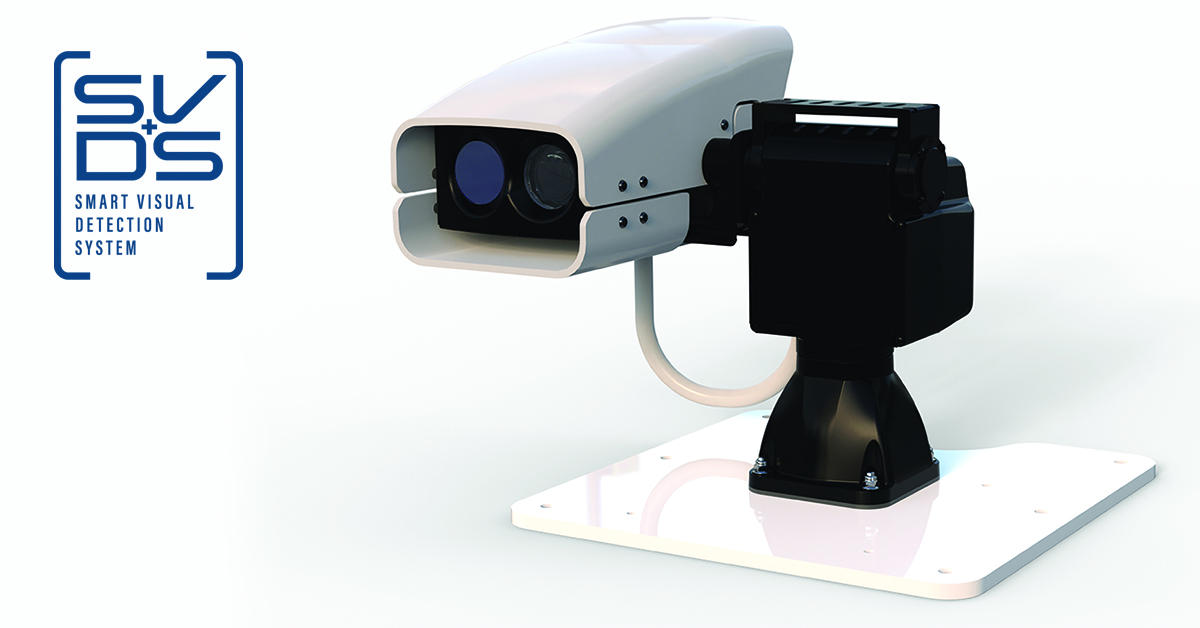YOUR EYES ON THE OCEAN™

Our Smart Visual Detection System (SVDS) is a new, compact, marinised and powerful camera system designed to provide high-definition video (HDV) and infrared (IR) imagery of the waters surrounding a vessel enabling consistent 24-hour visual monitoring.
- Designed with robustness and compactness in mind
- The system features impressive computing power
- Powerful on-board processing and storage
- Real-time automated detection
- Equipped with Artificial Intelligence capabilities, trained specifically on detecting whale blows in infrared
- Our advanced pan and tilt system with automatic scanning of an area up to 360 degrees
FAQs
- Q1: What is the Seiche Generation 2 camera system?
Seiche’s Generation 2 cameras are a compact, marinised, and powerful system designed to provide high-definition video (HDV) and infrared (IR) imagery of the waters surrounding a vessel for consistent 24-hour visual monitoring. It has robust features, consumes less power, has a powerful computing system, and is capable of real-time on-board automated detection.
- Q2: What are the improvements from the previous generation cameras?
The new Generation 2 cameras are more robust, compact, lighter, and easier to ship and install, thereby reducing operational costs. They consume less power and contain more powerful computing than the previous generation systems and have improved data security features. They also allow for user-configurable automatic scanning of an area up to 360 degrees.
- Q3: What are the detection capabilities of the Generation 2 thermal imaging camera?
The thermal imaging camera can detect marine targets at distances of up to 2.5 km – 4.0 km for large cetaceans, 1.5 km – 3.0 km for medium-size cetaceans, 2.0 km – 3.0 km for a group of small cetaceans, and 1 km – 1.5 km for small cetaceans.
- Q4: What are the components of the Generation 2 camera system?
The Generation 2 camera system consists of High-Definition Video (HDV), Long-Wave Infrared (LWIR), and thermal imaging camera pair, with on-board processing and storage. Each unit is robustly housed for maritime use.
- Q5: What is the ideal setup for a 360-degree coverage?
For optimal 360-degree coverage, Seiche recommends installing at least three Generation 2 dual-camera units onboard, each monitoring a 120-degree area. One unit overlooks the stern, and the other two cover the port and starboard area around the bow of the vessel. Additional cameras may be required if there are obstructions in the camera view.
- Q6: How can the coverage range be extended?
The coverage range can be extended by adding more camera systems. For example, two Gen2 systems will provide a 240° coverage, while three systems will give a 360° coverage.
- Q7: What are the future development capabilities of the Generation 2 camera systems?
Over the next 12-18 months, we plan to train the cameras on marine mammal data and develop real-time automated detection software in stages. These stages will evolve from human-assisted automated detections to the camera systems being able to automatically detect and classify marine mammal species in real-time.
- Q8: Please can you advise if your camera system already has AI capability?
Our Seiche Gen2 dual camera system is indeed equipped with Artificial Intelligence capabilities, thanks to its powerful hardware and processing capacity. We’re currently in the process of further harnessing these AI capabilities by developing our initial application, which utilizes a model trained specifically on detecting whale blows in infrared.
- Q9: Can you please though explain how the actual ID and monitoring works? It seems to have the capability to be automatic, but isn’t yet? Is that right? Does someone have to look at the screen or can it alert you of any cetaceans?
Our SVDS does indeed have the capability for automatic detection. The system uses advanced algorithms to analyse the thermal images and identify potential targets based on their heat signatures. This allows the system to detect marine mammals, even in challenging visibility conditions.
However, while the system can automatically detect potential targets, the final identification and monitoring of these targets currently requires human oversight. This means that an operator needs to review the detections made by the system and confirm whether they are indeed cetaceans. This process ensures the highest level of accuracy in our monitoring efforts.
Regarding alerts, we are currently in the process of developing an alert system that will notify the operator when it detects a potential target. Under current regulations, continuous observation of the screen is required. However, in the future, if regulations allow, the alert system could potentially reduce the need for continuous monitoring, allowing operators to respond promptly to alerts as they occur.
We are continuously working on improving our system and one of our development goals is to enhance the automatic identification capabilities of the SVDS. This will make the system even more user-friendly and efficient in the future.